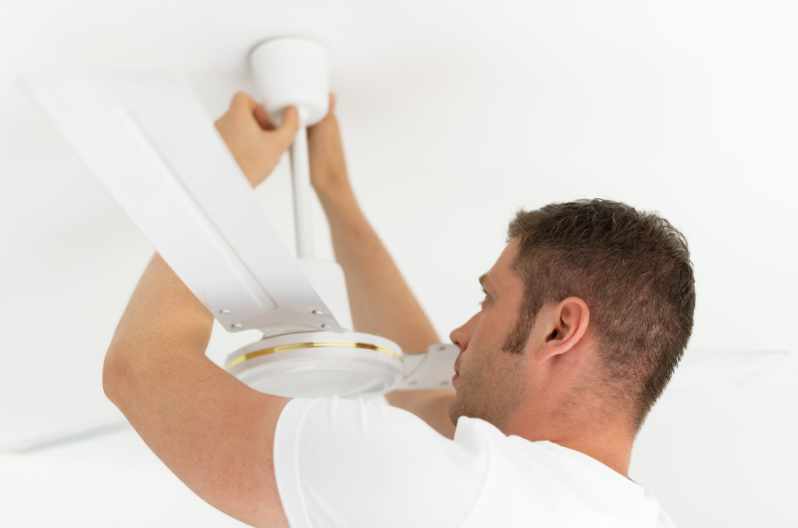
How Much Does It Cost To Install a Ceiling Fan Without Existing Wiring
Ceiling fans are an affordable way to cool your home and improve air circulation. However, installing a new fan can be tricky. From running new electrical to making sure the ceiling can support the fan, it takes planning and know-how. Most electricians can install fans quickly and relatively easily, but doing the work yourself can be more complicated. Here are the basics of how much it costs to install a ceiling fan without existing wiring. Plus, we look at what factors impact the cost and whether you can safely do the work yourself.
How Much Is It To Install a New Ceiling Fan Without Existing Wiring?
The national average to install a new ceiling fan without existing wiring costs $500. However, the total cost can range from $350 to over $1,000.
Installing a ceiling fan without existing wiring can be a complex and time-consuming process that requires the services of a professional electrician.
The cost of such a project will depend on a number of factors, including the location of the fan, the type and size of the fan, the amount of ceiling fan wiring needed, and the complexity of the installation process. The type of ceiling fan can also impact your total cost.
It is important to note that the cost of installing a ceiling fan without existing wiring will vary based on the specific circumstances of each project. As such, it is best to consult with a professional electrician to get a more accurate estimate for your specific project.
What Factors Determine How Much It Costs To Install a New Ceiling Fan?
When it comes to how much it is to install a new ceiling fan, there are several cost factors you need to consider:
- Cost of the fan itself – The first big factor in the total cost is the overall price of the fan. The cost for different types of ceiling fans varies widely. The average cost of entry-level fans is about $100, but the price range for most interior fans is between $250 and $1,000. Outdoor ceiling fans usually start around $500 and go up from there.
- Location of the fan – The placement of the fan also contributes to how much you will spend. While the location usually matters due to the length of the wiring, the location of the ceiling joists is also a factor. You may also need additional structural supports to hand the fan in some locations. Structural costs will vary from project to project.
- Length of electrical wiring – The length of the electrical wires also factors into the total cost. The longer the electrical run, the more holes they may need to poke into the wall. This drives up costs because they need to patch those holes after installation is complete. Expect wiring to start around $100 and go up from there.
- Location of the switches – Similar to the wiring, the location of the wall switches will impact the price. Separate fan and light switches, dimmer switches, additional wiring, and multiple switches will increase the cost. Installing a single switch usually runs $100 to $200, depending on the circumstances.
- Complexity of the process – From the location of the fan and switches to the length of the wire, the overall complexity of the installation will drive up the cost. For example, installing a fan on a sloped ceiling or a vaulted ceiling is usually more expensive. Some electricians may also need to hire general contractors or handypersons to handle structural changes and drywall work.
- Local labor rates – Finally, labor rates will vary based on your location. Professional electricians usually charge an hourly rate of $50 and $100 for labor, while a handyperson may charge between $25 and $50.

Can You Save on Fan Installation by Doing It Yourself?
Technically, yes, you can save on installation costs by doing it yourself. However, it can be a complete process that involves cutting open your walls and ceiling, running new wiring, and potentially adding structural reinforcements to your ceiling.
You should only attempt to install a new ceiling fan by yourself if you are experienced with both electrical wiring and drywall repairs. It’s also helpful to have a map of your current electrical wiring as well.
